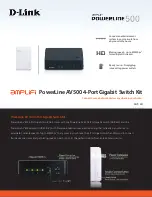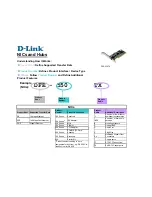
4-8
Cisco MGX 8800/8900 Series Hardware Installation Guide
Releases 2 - 5.2, Part Number OL-4545-01, Rev. H0, May 2006
Chapter 4
Planning for Card Redundancy, Line Redundancy, and Bulk Distribution
Planning Standalone and Redundant Card Configurations
Configured 1:1 Card Redundancy
Configured 1:1 card redundancy operates much like 1:1 PXM redundancy. The difference is that the
redundancy is not preconfigured. To use configured 1:1 card redundancy with cards such as AXSM,
FRSM12, and VXSM cards, the cards must be installed in the appropriate slots, and the cards must be
configured to operate as a redundant pair. After configuration, one card operates in active mode, and the
other card operates in hot standby mode. If the active card fails, the standby card takes over, and no calls
are lost.
Note
This configuration provides fault tolerance for the service modules only. Some cards, such as selected
AXSM, PXM1E, and VXSM cards, support line redundancy. For more information on planning for line
redundancy, see “
Redundant Line Configuration Guidelines
,” which appears later in this chapter.
When planning a configured 1:1 card redundancy configuration, consider the following:
•
Configured 1:1 card redundancy is supported by many service module families. Refer to
Table 4-1
to see which service modules support 1:1 card redundancy.
•
When redundant cards are connected to a standalone line, the cards can be placed in any available
slots; they do not have to be installed in adjacent slots, although doing so makes the cabling easier.
•
When redundant cards are connected to redundant lines using intercard APS, the cards must be
placed in adjacent slots. For more information, see “
Redundant Line Configuration Guidelines
,”
which appears later in this chapter.
•
When redundant cards are connected to redundant lines using intercard APS in a MGX 8950 switch,
you must install redundant AXSM-XG cards in adjacent slots where the odd numbered slot is the
lower number. For example, you can install redundant AXSM-XG cards in slots 3 and 4. However,
if you install redundant AXSM-XG cards in slots 4 and 5, intercard APS cannot be configured for
these cards.
•
The front cards must be identical. If you install non-matching cards, such as an AXSM OC-48 card
and a AXSM OC-3 card, these cards cannot be configured as a redundant pair.
•
The back card sets must be compatible. For T1, E1, T3, and E3 interfaces, this means that the back
cards must be identical. For optical and STM-1 interfaces, the back cards must use the appropriate
speed based on the front card, but you can use different interface types. For example, if a service
module supports single mode and multimode fiber interfaces, you can use both interface types in the
same redundant card set.
•
The cards must be cabled and configured for standalone lines (Y-cables) or redundant lines (APS).
Although cards can be configured before the cabling is installed, the redundant card set will not
operate properly until the correct cabling is installed between the redundant card pair. For more
information, see “
Planning for Standalone and Redundant Line Configurations
,” which appears later
in this chapter.
1:N Redundant Card Configuration Guidelines (Except RPM)
1:N card configurations use one standby card to back up multiple active cards. If an active card fails, the
standby card loads the proper configuration and takes over operation for the active card. Once the
standby card transitions to the active mode, it is no longer available to back up other active cards.
With the exception of 1:N redundant configurations on RPM cards, 1:N redundant card configurations
always require the services of one or more SRM cards.
















































